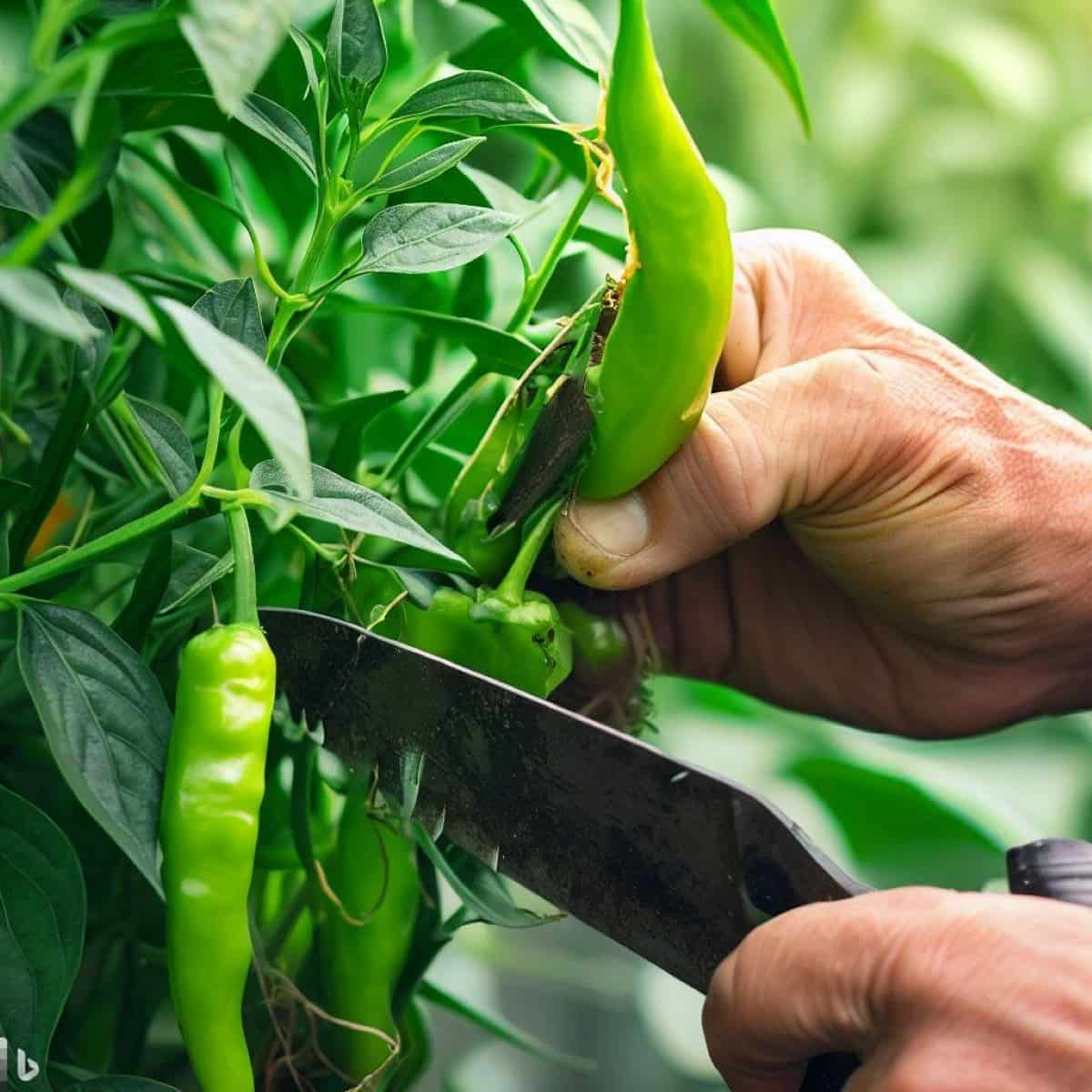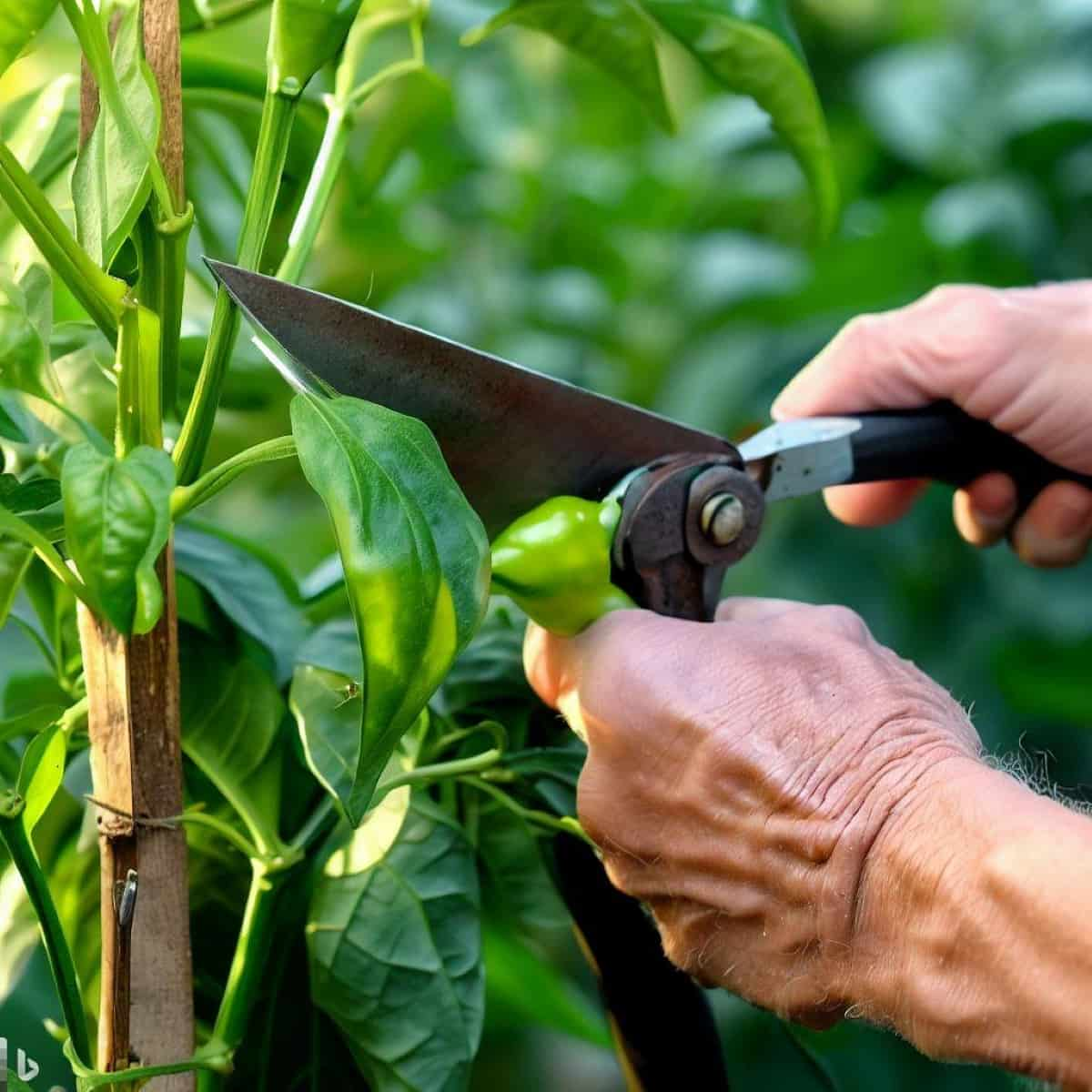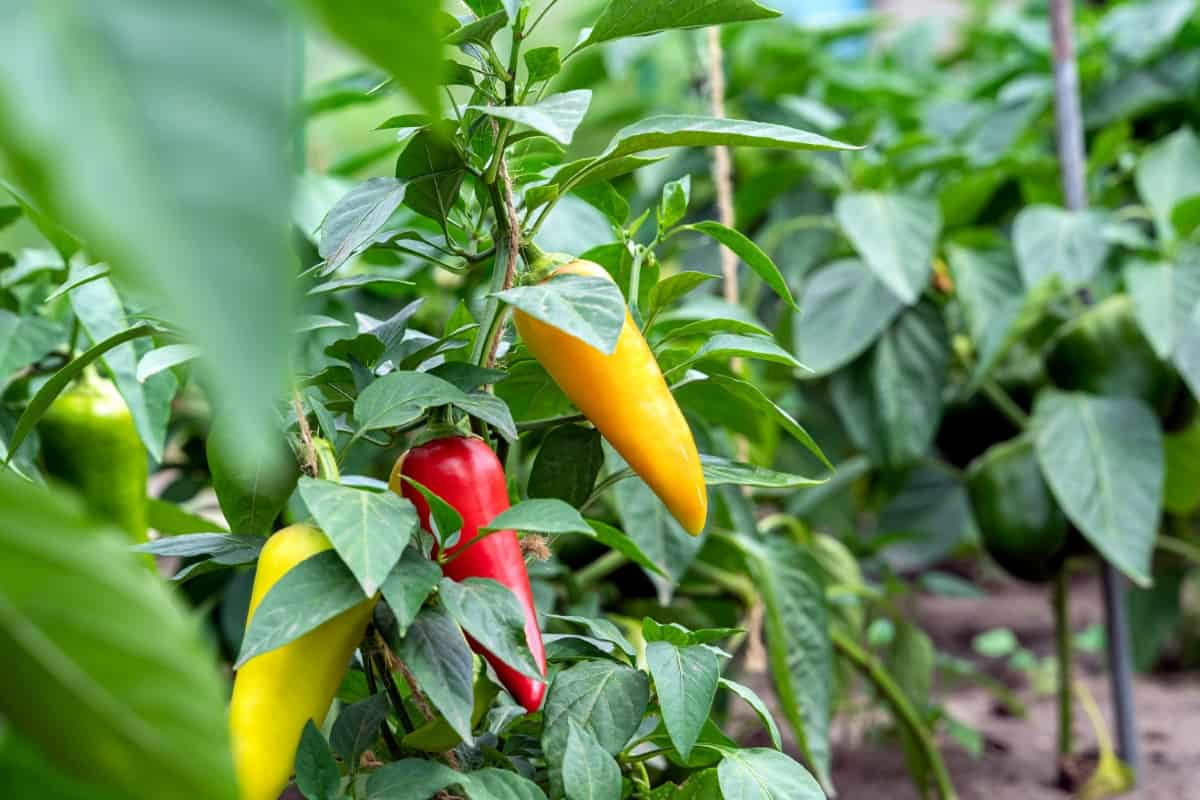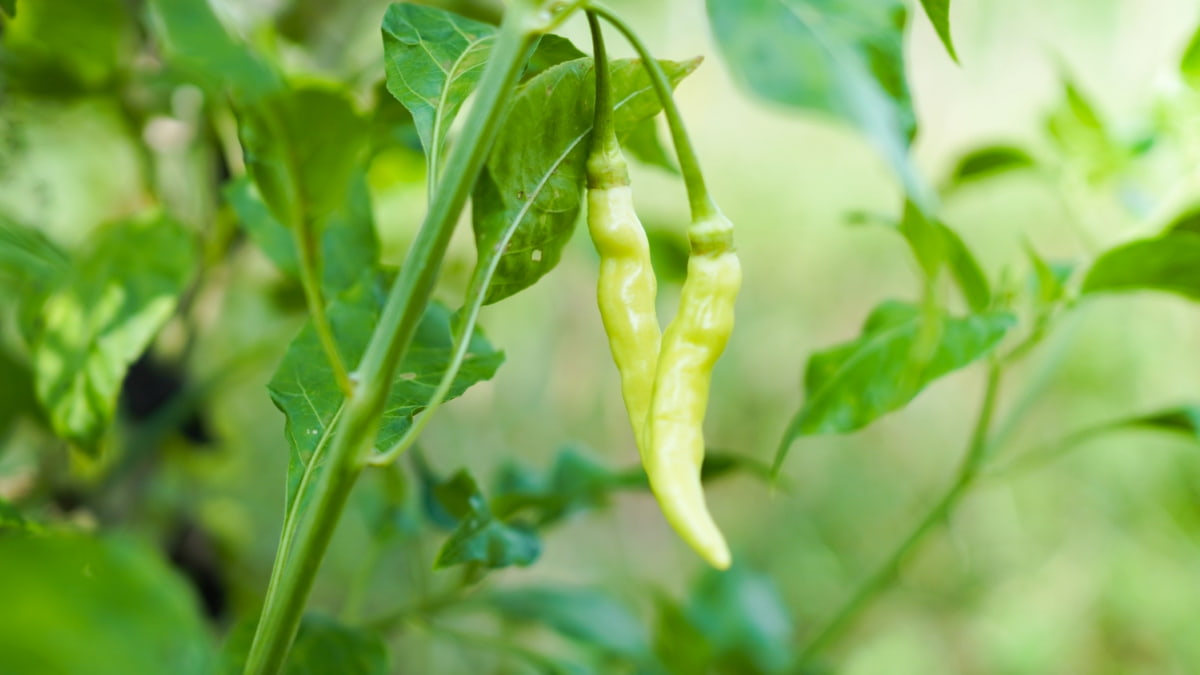Pruning pepper plants is essential for any gardener looking to maximize crop yield. By selectively removing certain parts of the plant, you can encourage healthy growth, improve air circulation, and increase the production of peppers. This guide will discuss how to prune pepper plants, the best time to trim pepper plants, and the tools and techniques needed to achieve the best results.

Understanding the Basics of Pruning Pepper Plants
Pruning pepper plants is essential for ensuring healthy growth and maximizing fruit production. Removing unnecessary branches allows more sunlight to reach the plant, promoting photosynthesis and enhancing fruit development. Pruning also improves air circulation, reducing the risk of diseases and pests.
To prune pepper plants, identify the main stem and remove any suckers that grow from the leaf axils. Remove damaged or diseased branches and thin out crowded areas to ensure adequate spacing between plants. Remember to use clean and sharp pruning tools to prevent the spread of diseases. Regular pruning will help maintain the vigor and productivity of your pepper plants.
When is the Best Time to Prune Pepper Plants?
Early-season pepper plant pruning: When your peppers are only 10-12 inches tall, you can start pruning them. If you let your seedlings grow tall enough before moving them out to the garden, then this should be right after transplanting them. During this stage, you should see the Y-shaped frame that pepper branches form and you can then prune around it.
Mid-season pruning of pepper plants: The mid-season pruning period does not have hard dates, as it falls when the plant is established and setting fruit. Mid-season pruning aims to maintain the plant continuously so that it continues to produce fruit and remains healthy.
Late-season pepper plant pruning: The last time peppers are pruned is at the end of the season. By this time, the plants will be at their mature height, which can range from 2 to 6 feet, depending on what variety is being grown. All peppers should be mature and set, but they may need to ripen more before they are ready to eat.
Tools and Equipment Needed for Pruning Pepper Plants
Among the most useful tools, we find the pruning shears (ideal for cutting small diameter branches), the branch cutter (for thicker branches), and the gardening knife (to remove leaves and thin branches). Ensure you have tools on hand well sharpened and clean to avoid damage to the plant and reduce the risk of infection. Hile pruning pepper plants, wearing protective gloves, such as nitrile gloves, is advisable to avoid skin irritations caused by the capsaicin in Chillies.
In case you missed it: How to Prune Plum Trees: Best Time to Trim, Tools and Techniques to Cut Back Plum Trees

Step-By-Step Guide: How to Prune Pepper Plants
- Step 1: Start by identifying the main stem of the pepper plant. This is where the plant grows from and is usually the thickest stem.
- Step 2: Look for any damaged or diseased branches. These should be pruned first to prevent the spread of diseases.
- Step 3: Locate any suckers or side shoots from the main stem. These suckers can divert energy from the main stem and reduce fruit production.
- Step 4: Cut off the suckers close to the main stem using clean and sharp pruning shears. This will help redirect the plant’s energy towards fruit production.
- Step 5: Remove any branches crossing or rubbing against each other. This can cause damage and hinder the plant’s growth.
- Step 6: Trim back any overgrown branches to maintain a compact and well-shaped plant.
- Step 7: Finally, remove any small or underdeveloped peppers. This will allow your peppers plant to focus its energy on the larger, healthier fruits.
Pruning Techniques for Encouraging Growth and Fruit Production
It’s crucial to determine the type of pruning you want. This could include topping the plants, pinching flower buds, or removing lower branches. Understanding your specific pruning goals will help you approach the task clearly and purposefully. Next, make sure you have the right tools on hand. Clean and sharp scissors or shears are essential for a successful pruning session.
Using dirty or dull tools can introduce pathogens to the plants and potentially harm them. Before each use, remember to clean your tools thoroughly to minimize the risk of spreading diseases. It’s also important to avoid hand-breaking when pruning pepper plants. While it might be tempting to tear off unwanted plant parts with your hands, this can cause unnecessary stress and potential damage. Instead, using proper tools, such as scissors or shears, ensures cleaner cuts and reduces the plant’s risk of injury.
Removing Diseased or Damaged Branches from Pepper Plants
When caring for pepper plants, removing any diseased or damaged branches is important to ensure the plant’s overall health. Diseased branches can spread infections, while damaged branches may hinder the plant’s growth and development.
To remove these branches, use a clean pair of pruning shears and make clean cuts just above the node or bud. Be sure to dispose of the removed branches properly to prevent the spread of disease. Regularly inspecting and removing diseased or damaged branches will help maintain the vitality of your pepper plants.
Pruning to Maintain the Pepper Plant’s Size and Shape
By removing unwanted or excessive growth, gardeners can ensure proper airflow and light penetration, which promotes healthy plant development. Pruning also helps in preventing diseases and pests that may affect the plants. To maintain the shape, pinch off the top of the plant when it reaches a desired height. Additionally, remove any side shoots or suckers that emerge from the leaf axils. Regular pruning will help keep the pepper plants compact and productive.
In case you missed it: How to Trim a Cactus: Cactus Pruning Tools, Techniques for Overgrown Cacti Pruning

Tips for Pruning Chili Pepper Plants in Containers or Small Spaces
- Start pruning once the plant reaches a height of 6-8 inches. This will encourage a bushier growth habit.
- Remove damaged or diseased branches, if any, to prevent the spread of infections.
- Pinch off the top of the plant once it reaches a desired height to promote lateral branching.
- Regularly pinch off the suckers in the leaf axils to maintain a compact plant.
- Prune away any overcrowded branches to improve air circulation and sunlight penetration.
- Remove the first few blooms if your pepper plant seems to grow well. Early flowers that set and begin to grow fruit takes energy away from the plant that could better be used to grow the plant larger and sturdier first.
- Clean and sharp pruning shears should be used to make clean cuts and prevent the introduction of pathogens.
Pruning Strategies for Different Types of Pepper Varieties
- Determinate varieties, such as bell peppers, benefit from minimal pruning. Removing suckers and diseased branches ensures good airflow and prevents overcrowding.
- Indeterminate varieties, like chili peppers, require more aggressive pruning. Pinching off the growing tips and removing lateral branches promotes upward growth and higher yields.
- Light pruning can shape the plants for ornamental pepper varieties for aesthetic purposes.
Pruning Jalapeno Pepper Plants
First, remove any damaged or diseased leaves or branches. This will prevent diseases and pests from spreading. Next, identify the suckers – the small shoots that grow in the leaf axils. These suckers take away nutrients from the main plant, so they should be carefully removed. Lastly, trim the top of the plant to encourage bushier growth.
The stem of smaller pepper varieties like jalapeno can be cut or pinched when it is about 12 inches tall, a practice called topping or tip pruning. Plants respond by sending out new branches along the stem, increasing their strength and fullness.
Pruning Bell Pepper Plants
Pruning bell pepper plants ensures healthy growth and maximum fruit production. The process involves removing the suckers, small shoots from the leaf axils. By eliminating these suckers, the plant’s energy can be focused on developing larger and more productive fruit. Additionally, pruning helps improve air circulation and reduces the risk of disease. It is recommended to prune bell pepper plants when they reach a height of 12-18 inches. Use sharp and clean pruning shears and make clean cuts at a 45-degree angle.
Common Mistakes to Avoid When Pruning Pepper Plants
Make sure to cut the peppers from the plant instead of plucking them. This is to avoid damaging the plants by creating a clean cut. Using dull or inappropriate tools can damage the plant and increase the risk of disease transmission.
- Neglecting to sanitize tools: Failure to sanitize tools between pruning different plants can spread diseases. It is important to clean and disinfect tools before and after each use to prevent the transmission of pathogens.
- Cutting too close to the main stem: When making pruning cuts, it is important to avoid cutting too close to the main stem.
In case you missed it: When to Prune Fruit Trees in Utah: Best Time to Trim, Key Strategies to Cut Back

Conclusion
In conclusion, pruning pepper plants is a vital gardening practice that can significantly improve their health and productivity. By understanding the best time to prune, using the right tools and techniques, and removing diseased or damaged branches, you can maximize the yield of your pepper plants and enjoy a bountiful harvest.
- Feed Your Flock for Less: Top 10 Tips to Save on Chicken Feed
- Ultimate Guide to Ossabaw Island Hog: Breeding, Raising, Diet, and Care
- Hatching Answers: The Top 10 Reasons Your Chickens Aren’t Laying Eggs
- Eggs and Economics: Breaking Down the Cost of Raising Backyard Chickens
- Defend Your Greens: Proven Methods to Keep Iguanas Out of Your Garden
- Ultimate Guide to Cinnamon Queen Chicken: A Comprehensive Guide for Beginners
- Ultimate Guide to California Tan Chicken: Breeding, Raising, Diet, Egg-Production and Care
- Ultimate Guide to Marsh Daisy Chicken: Breeding, Raising, Diet, and Care
- 10 Types of Chicken Farming Businesses You Can Start for Profits